Contents
- Crop Cultivation
- Agricultural Communities
- Festivals or Rituals Related to Farming
- Types of Farming
- Modern Inputs
- Traditional Agricultural Practices
- Tifan
- Weeding
- Homemade Fertilizers and Pesticides
- Aakodi
- Use of Technology
- Institutional Infrastructure
- Market Structure: APMCs
- List of APMC markets(as of September 2024)
- Farmers issues
- Water Scarcity and Climate Challenges
- Indebtedness and the High cost of modern inputs
- Land Fragmentation
- Transport Issues
- Graphs
- Irrigation
- A. No. of Projects
- B. No. of Ponds/Vilage Lakes and Storage Dams
- C. Irrigation Beneficiary Area vs Irrigated Area
- D. Share of Beneficiary Area Irrigated
- E. Tubewells and Pumps Installed In The Year
- F. Irrigation and Water Pumping Facilities
- Cropping Metrics
- A. Share in Total Holdings
- B. Cultivated Area (With Components)
- C. Gross Cropped Area (Irrigated + Unirrigated)
- D. Share of Cropped Area Irrigated
- E. Distribution of Chemical Fertilizers
- Land Use and Credit
- A. Area of Agricultural Land Holdings (With Size Group)
- B. Size Groups' Share in Total Agricultural Land Holdings Area
- C. No. of Agricultural Land Holdings (With Size Group)
- D. Size Groups' Share in Total No. of Agricultural Land Holdings
- E. Agricultural Lending
- F. Agricultural Credit as a share of Total Credit
- Sources
AKOLA
Agriculture
Last updated on 6 November 2025. Help us improve the information on this page by clicking on suggest edits or writing to us.
Akola district is located in the drought-prone Vidarbha region of Maharashtra, at the foothills of the Satpura hill range. Known for its rich black soil, typical of the Deccan Plateau, the district’s economy is primarily agricultural, with cotton and soybeans as the major crops. Akola is also home to several significant rivers, including the Purna, Morna, Vaan, and Shahnoor.
Crop Cultivation
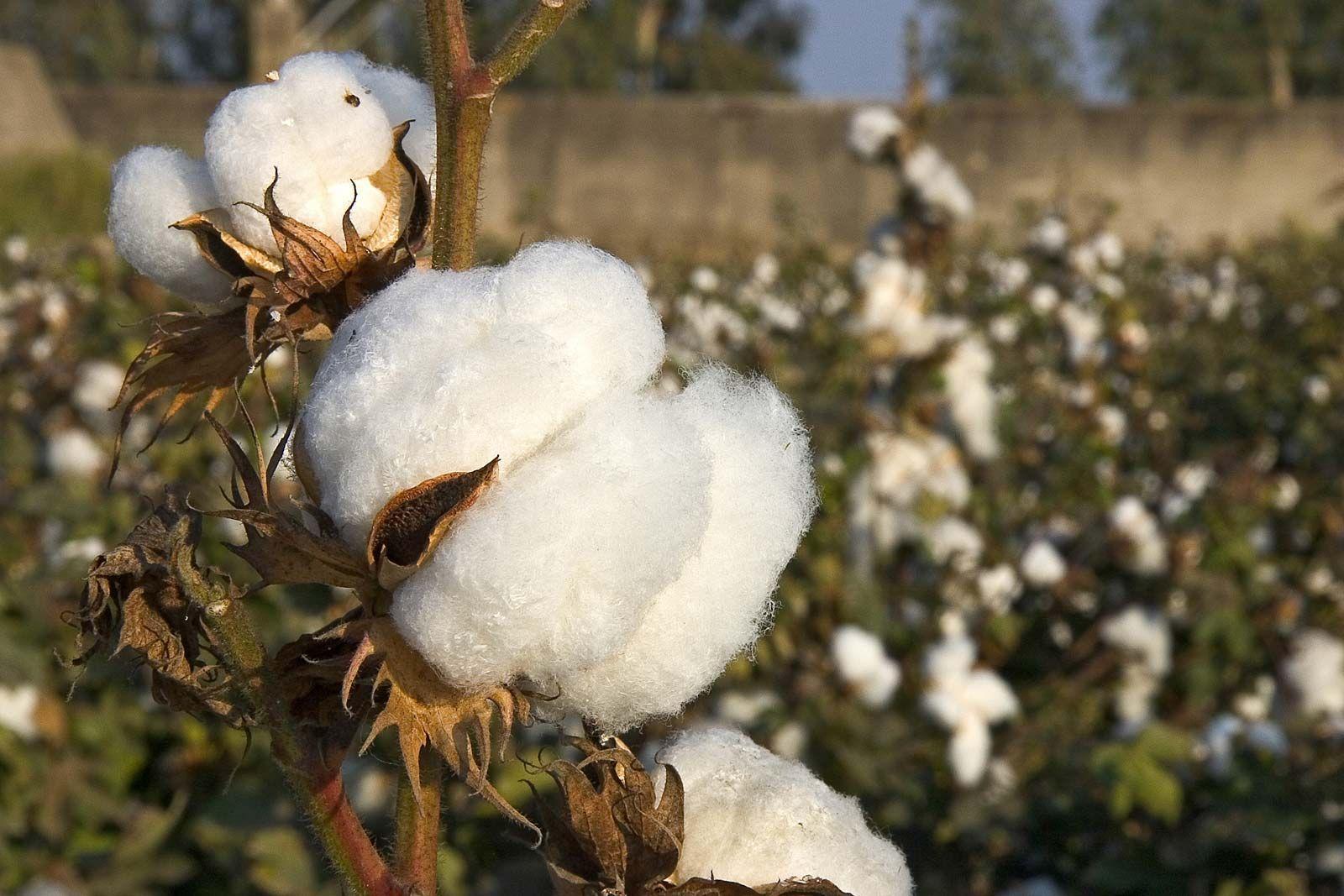
The district of Akola lies entirely in the Deccan Plateau. Its weather is usually hot, moist, and semi-arid, and the soil is clayey Black (shallow loamy to clayey Black soils). The soil in Akola is known for its fertility, and the presence of rivers such as Purna, Katepurna, Morna, Shahanoor, and Vaan adds to the region's fertility. The area is conducive for crops such as Cotton, soybean, Jowar (grown during the Kharif season), Mung (Green Gram), Urad Daal (Black Gram), Tur Dal (Pigeon Pea), Kala Chana (Gram), Wheat, and Kardi (Safflower). Akola is one of Maharashtra's leading dal-processing hubs, promoting the agriculture of pulses, the agro-industrial growth, and rural employment.
Horticulture crops such as Mangoes, Oranges, Chicoos, Tomato, Brinjal, Cabbage, Cauliflower, Guar (Cluster beans), Lady’s finger, Spinach, Fenugreek, Dodke (Ridge gourd), Cucumber, Bitter gourd, and Onions are also cultivated.
According to the district Gazetteer (1977), crops such as cereals, pulses, oilseeds, spices, and fibers were grown on a large scale during the Kharif season, and crops such as Gram, linseed, peas, and Wheat were grown during the Rabi season. This pattern hasn’t changed much.
Agricultural Communities
The Hyderabad and Akola Gazetteers of 1901 and 1977 mentioned several communities closely associated with agriculture in the region. The Bhois primarily supply agricultural labor and care for livestock, while the Maharas and Mangs also provide labor, offer various services, and sometimes own land. The Kunbis and Marathas, generally more prosperous, rely heavily on agriculture and hold most of the land. The Malis contribute as agricultural laborers, and the Kolis, an early immigrant community, are also involved in farming. The Andhas, an Indigenous community found in the hilly southern parts of Akola, engage in agriculture and provide labor. Additionally, the Lonaris, a community of salt makers from the Akot region in the Purna River valley, has a traditional connection to salt production, as "Lonar" refers to salt in the local language. Other communities, such as the Bedhars, Kannadas, etc, are also routinely involved in agriculture.
Festivals or Rituals Related to Farming
Nag-Diwali is celebrated about a month after the traditional Diwali. During this time, jowar crops are maturing in the fields. People harvest the jowar, bring it home, and thresh the plants to separate the grains. These grains are then roasted over a fireplace to make a delicious snack called "hurda". Though typically made from jowar, hurda can also be prepared using wheat. It is especially enjoyed in the winter and eaten with great enthusiasm.
Later on, the dried grains are ground in a mill or manually using a traditional grinder. The resulting flour is kneaded into dough, which is then cooked with jaggery boiled in water to make a sweet and flavorful dish.
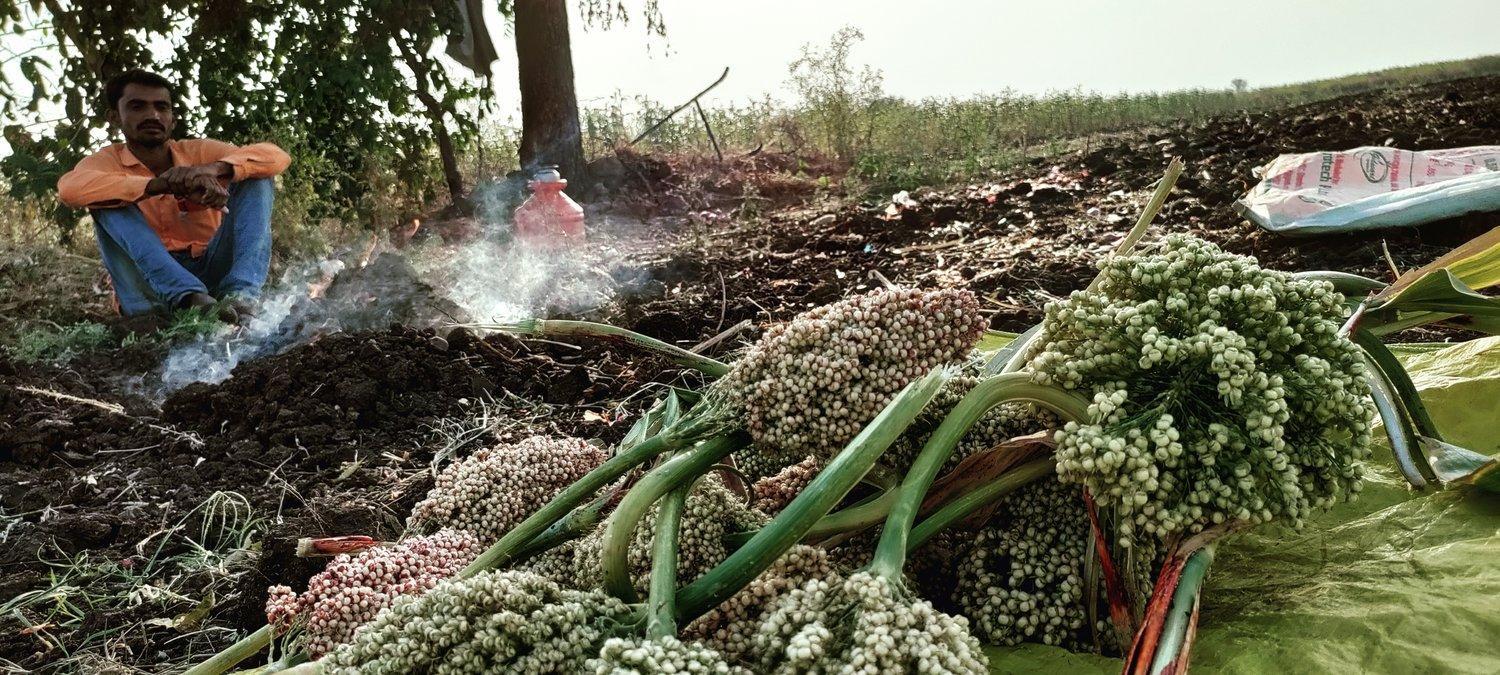
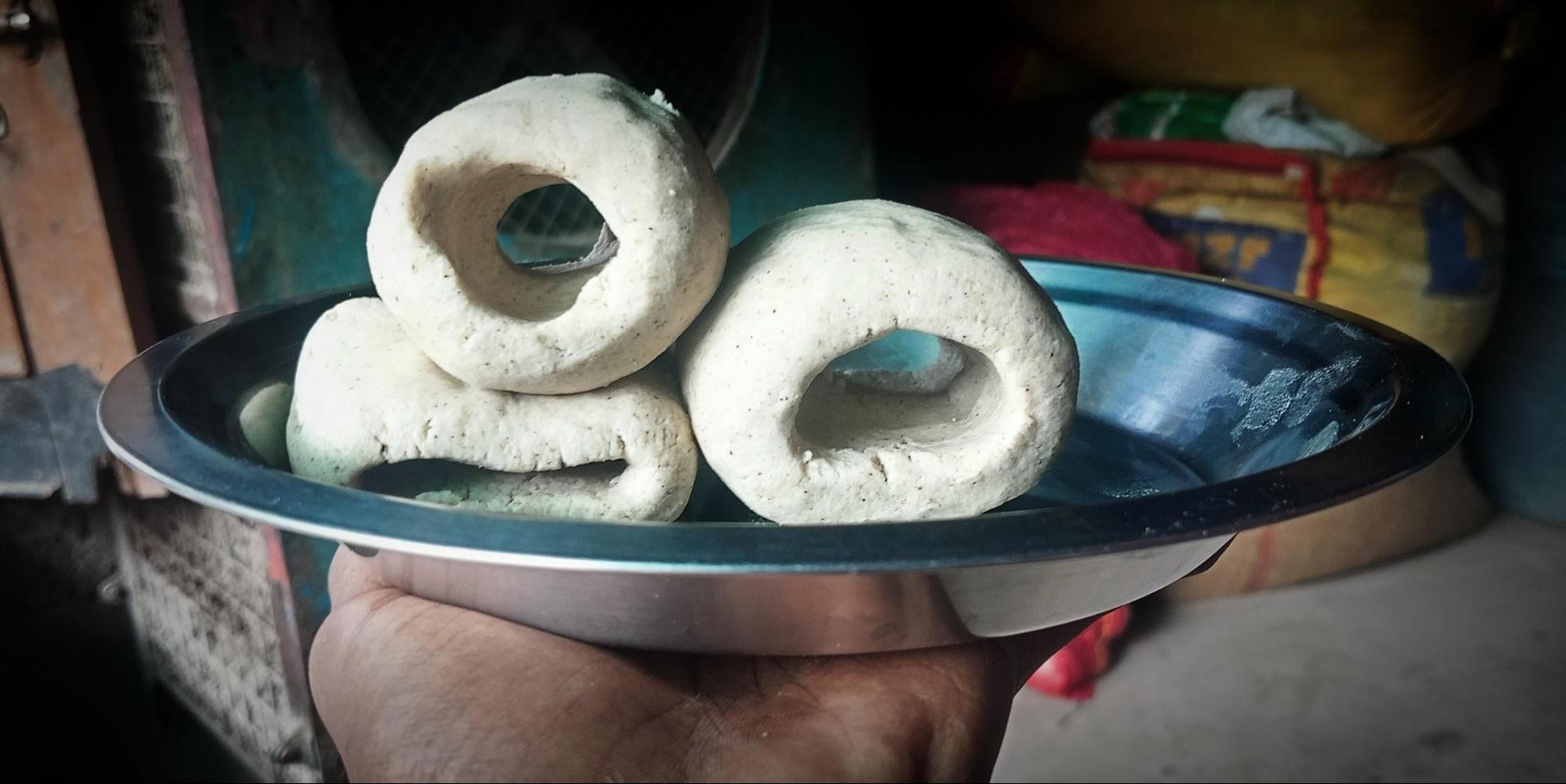
Types of Farming
Farming in the district depends on the soil types. Much of Akola’s soil is derived from the Deccan trap and is fertile. The northern half of the district has good black soils. On the other hand, the soils on the plateau are shallow with murum substratum (fragmented weathered rock). The soils in the hilly tracts of the southern as well as the eastern marginal belts of the district, and also in the northeastern portion, are less productive, shallow, and stormy. The most fertile soils of the district are the rich soils of the Purna Valley. Regarding the rainfall pattern, the district receives rains which traditionally break in the mrig nakshatra, at the beginning of June.

Farmers in Akola typically grow one cotton crop annually, with some also cultivating soybeans or lentils, primarily during the rainy season. Over the past decade (2013 to 2023), the region has generally experienced good rainfall, except for the years 2018, 2014, 2016, and 2017. Despite this, water availability remains a persistent challenge for farmers annually.
Farmers used to commonly rely on wells, locally known as "Mot, " for irrigation. Many of these wells are old and serve multiple purposes, including providing water for household chores and drinking.
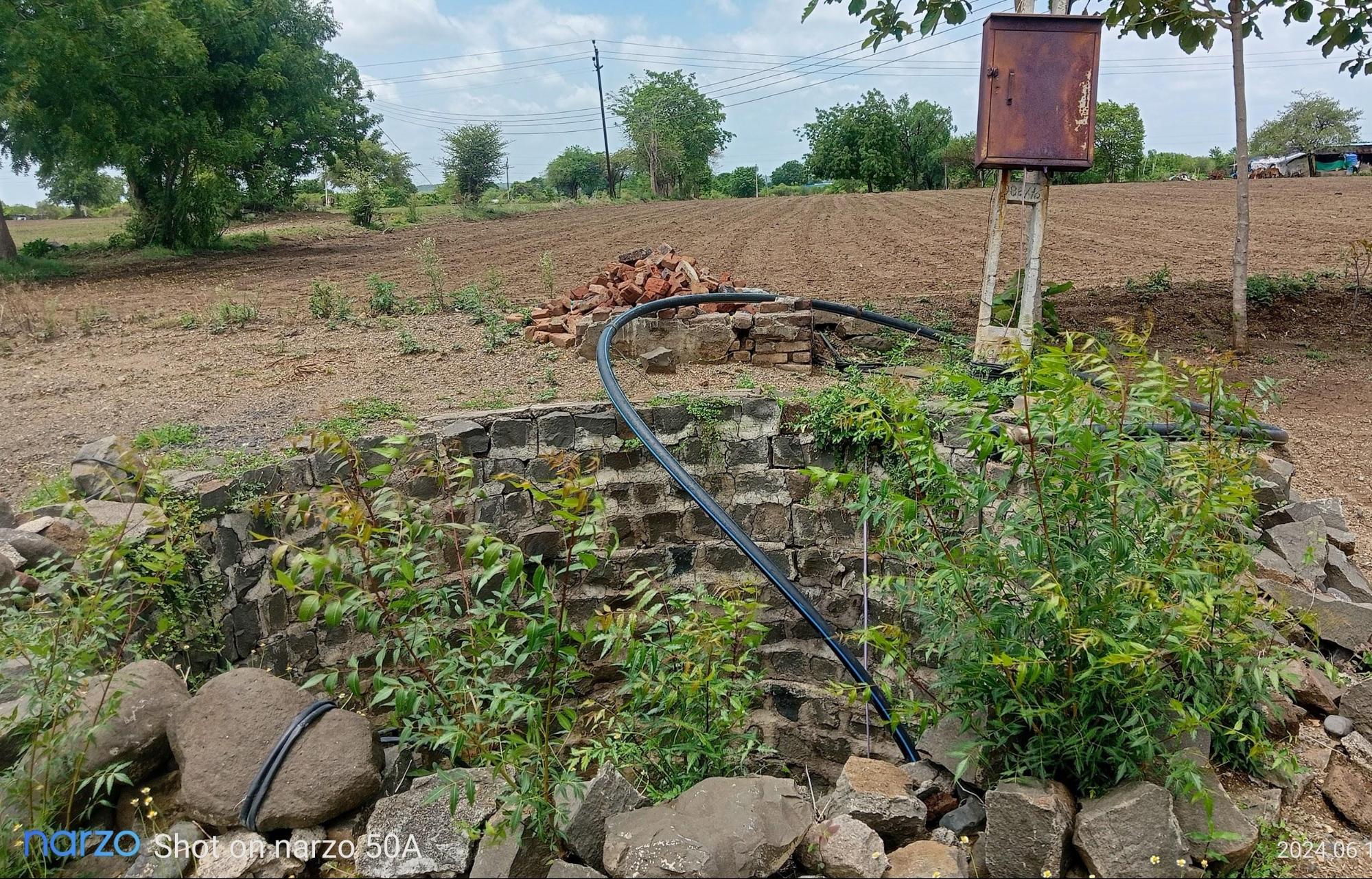
Modern Inputs
The use of chemical fertilizers has increased considerably. Some farmers also practice mixed cropping or intercropping, i.e., the cultivation of two or more crops together in the same field simultaneously. This practice is also known as Ferkakada in the region. Farmers have also started using better irrigation methods, such as borewells, sprinklers, or drip irrigation. Orchards of various fruits and vegetables have also emerged.

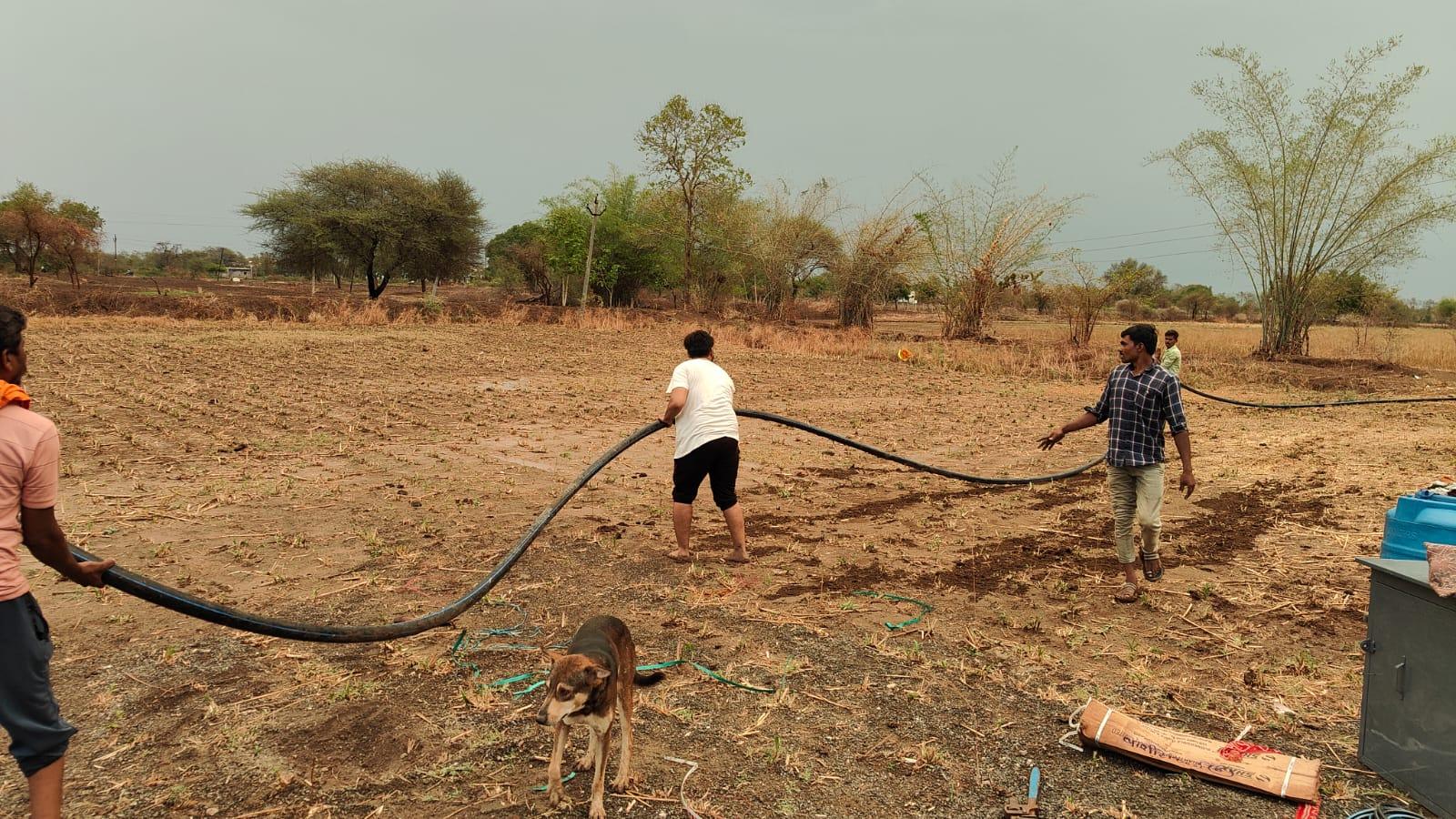
Traditional Agricultural Practices
Tifan
The "Tifan" is an ancient and traditional sowing machine that is used in the district. It consists of three pipes connected to a circular, deep bowl-like structure called "chal" (चाळं), which is then attached to bulls for operation. Farmers tie small bags around their waists, fill the circular bowl with seeds, and periodically drop seeds as they cover the field. In some rural areas, this machine is still used for sowing in small plots of land. However, the "Tifan" has become rare and is hardly made anymore, as tractors have largely replaced this method. Additionally, the decline in the availability of bulls has further contributed to the disappearance of this traditional practice.
Weeding
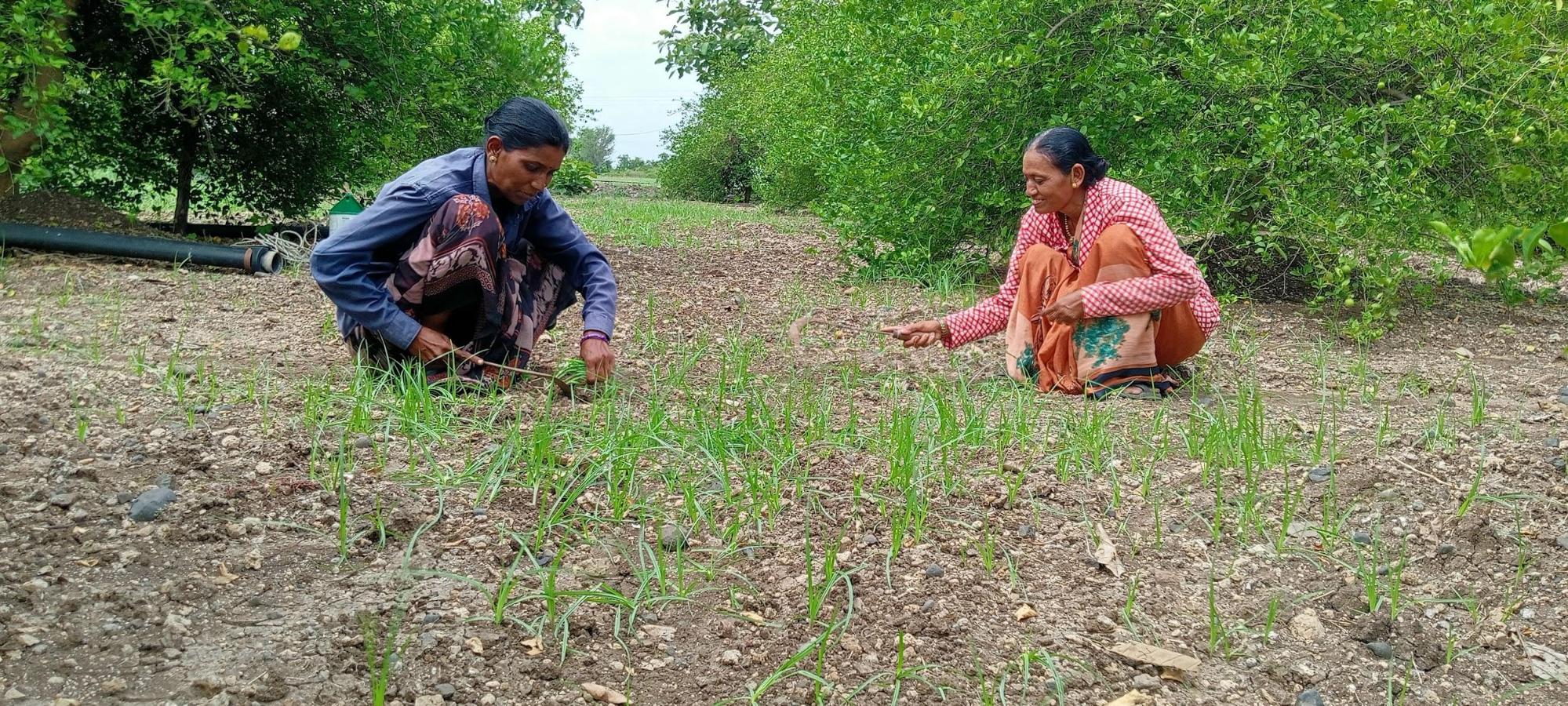
After harvesting, farmers traditionally used sickles for weeding to prevent the growth of unwanted plants, employing many. In some areas, shepherds would request permission to let their livestock graze in the weeds. This would help the shepherds feed their livestock, while also helping the farmer in weeding out weeds.
Homemade Fertilizers and Pesticides
Before chemical sprays became widely used, farmers relied on a traditional pesticide made from the extract of neem tree seeds, known as Nimboli Ark (अर्क). Neem has been valued for centuries for its ability to prevent illness, boost immunity, and repel pests. The seed extract is rich in Azadirachtin, a potent compound that acts as an antifeedant and is toxic to insects. Farmers would collect ripe Nimbolis (neem fruit) at the end of May or early June when they naturally fall from the trees and use them to prepare this effective, natural pesticide.
Many farmers also kept bulls, cows, and other livestock. They would designate a spot in a corner of the farm, away from frequently used areas, to collect animal droppings. If their farm was close to home, they would also dispose of household waste in this area to produce organic fertilizer. During the rainy season, farmers couldn’t leave their animals in the fields due to the risk of danger, so they brought them home and kept them in a designated space, away from areas where people frequently passed.
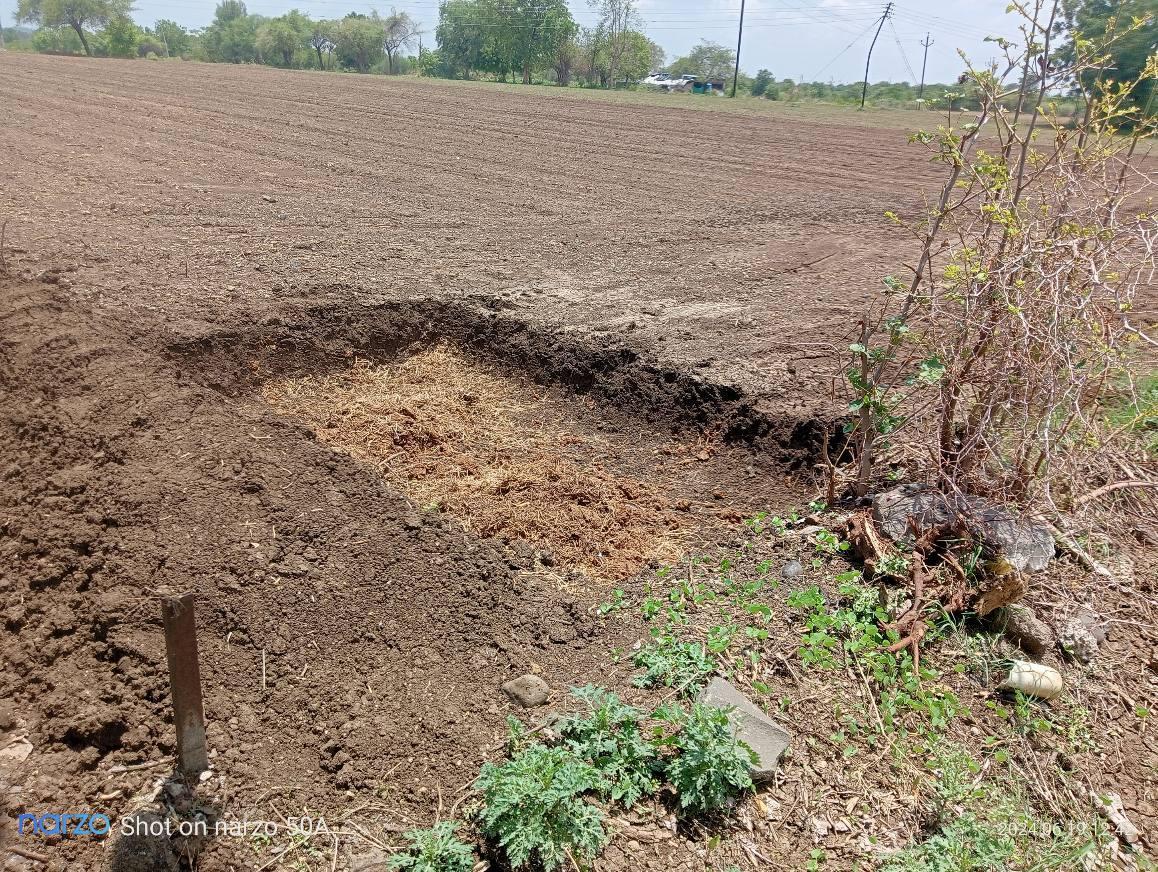
Aakodi
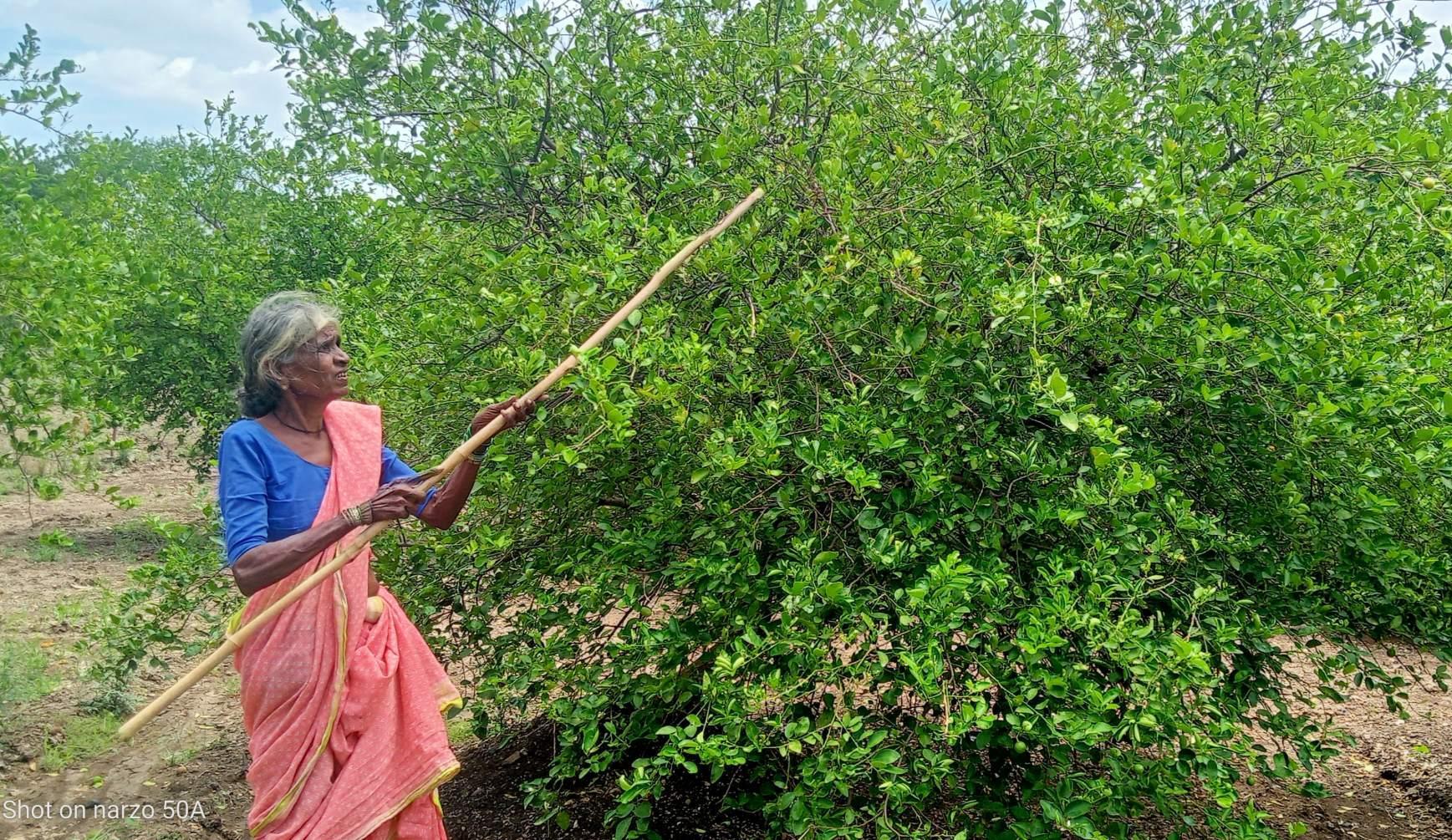
Aakodi is a special tool often used by women to pick fruits of various kinds. Made from bamboo with a wire attached at one end, the wire is wrapped and bent into a circular shape to assist in carefully plucking the fruits from the trees.
Use of Technology
Farmers in Akola have begun adopting modern technologies such as tractors and pesticides. They also utilize contemporary inputs like pesticides, weedicides, and insecticides to enhance productivity. Genetically modified versions of crops such as Cotton (Bt Cotton) have also gained acceptance.
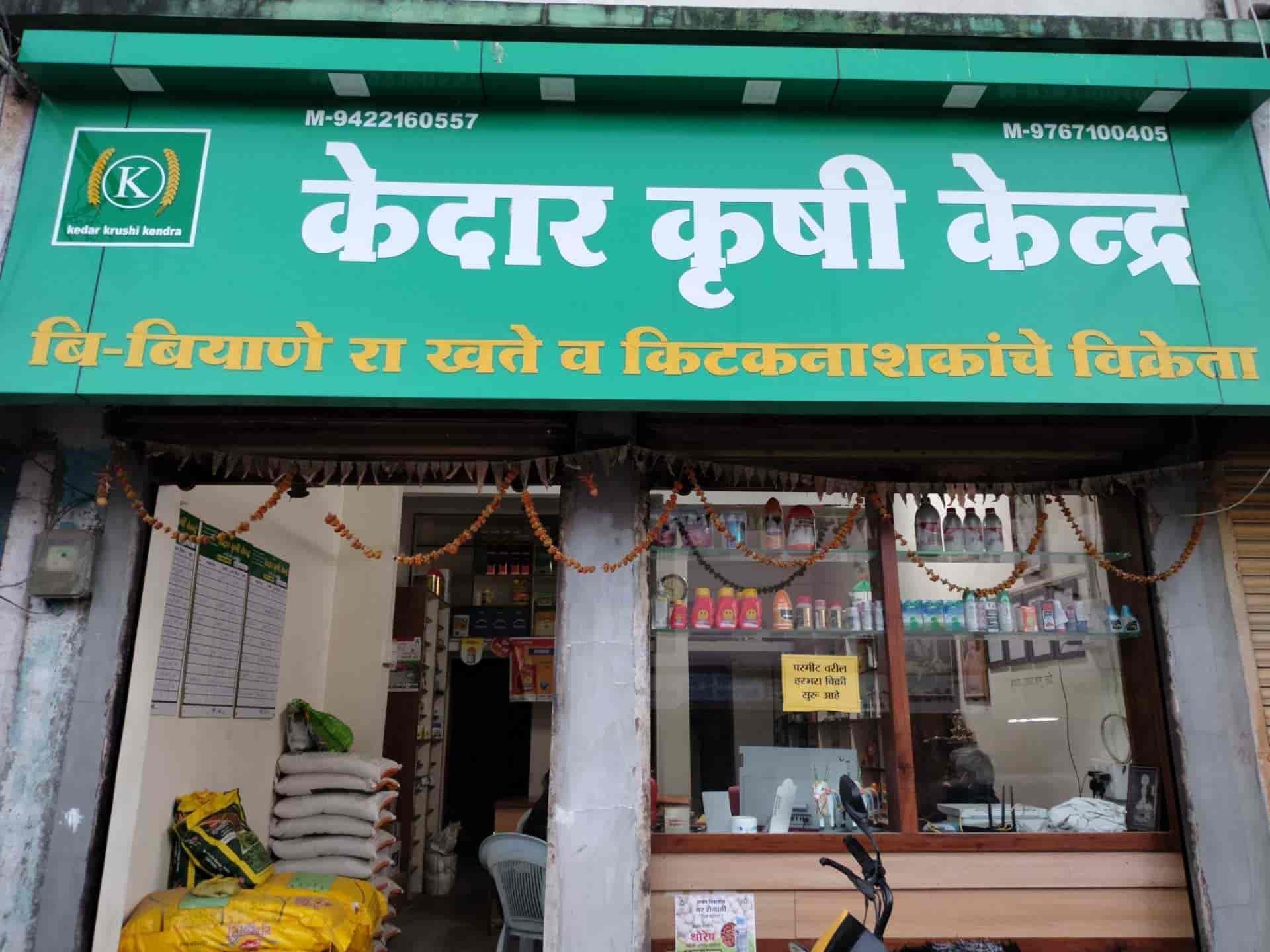

Institutional Infrastructure
The district's infrastructure often appears inadequate in certain areas. According to a 2016-17 NABARD report, there is a significant shortage of cold storage facilities, soil testing labs, pucca (paved) roads, and agro-processing units. Additionally, frequent power outages, electricity theft, insufficient irrigation systems, and other basic infrastructural gaps further aggravate the situation. This paints a grim picture of the district's agricultural infrastructure, which is vital for supporting farmers. For instance, without proper cold storage, crops like fruits and vegetables face quick spoilage, reducing profits for small farmers. The lack of paved roads hampers easy transportation, making it harder for farmers to bring their produce to markets.
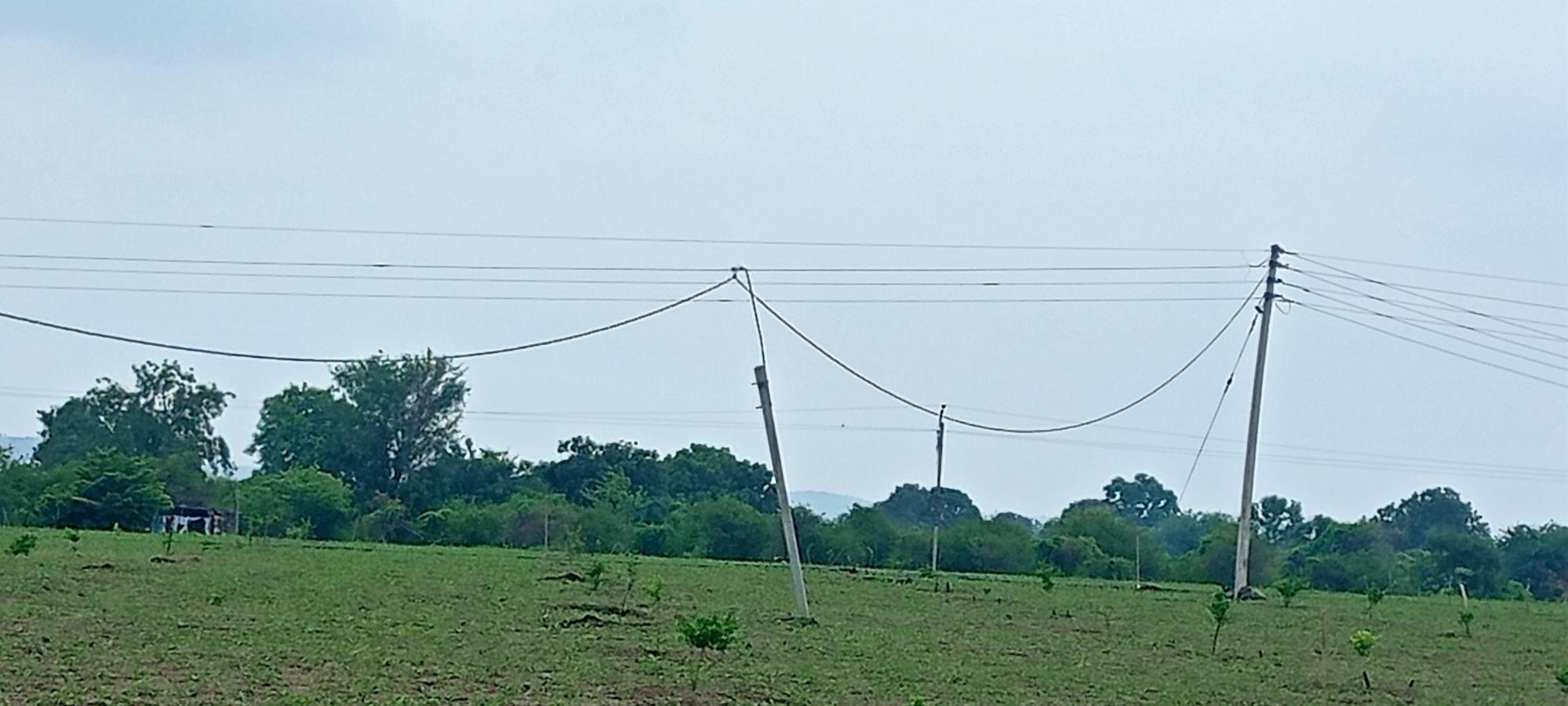
The presence of Dr. Panjabrao Deshmukh Krishi Vidyapeeth offers some relief to the agricultural community. Established on 20th October 1969, the university's main campus hosts five colleges: the College of Agriculture, College of Agricultural Engineering & Technology, College of Forestry, College of Horticulture, and the Post Graduate Institute. The campus offers four undergraduate degree programs: B.Sc. (Agriculture), B.Sc. (Horticulture), B.Sc. (Forestry), and B.Tech. (Agricultural Engineering), along with two master's programs, M.Sc. (Agriculture) and M.Tech. (Agricultural Engineering), and doctoral programs in the faculties of Agriculture and Agricultural Engineering.
The university also engages in extensive research across various agricultural fields, supported by 17 research units that focus on crops cultivated in the region. Additionally, 18 Agricultural Research Stations, some predating the university, fall under its jurisdiction. Since 2002, the university has published its research journal annually. To promote scientific advancements in agriculture and enhance productivity, profitability, and sustainability in the region, the university has also established 14 Krishi Vigyan Kendras. The University was also actively involved in organizing the state-level 2023 Agrotech Exhibition program on its premises in December 2023.
In 2023, the Maharashtra Cabinet approved a grant of Rs 1,710 crore to speed up and finish the Jigaon dam project on the Purna River in Nandura, Buldhana district. Once it's done, the dam will irrigate over a lakh hectares of farmland and provide drinking water to drought-prone areas in Akola, Buldhana, and nearby districts. The project received its third revised approval in 2019. It's worth noting that the project was originally sanctioned back in 1997 with an outlay of Rs 699 crore, but the cost has skyrocketed over the past 25 years.
Market Structure: APMCs
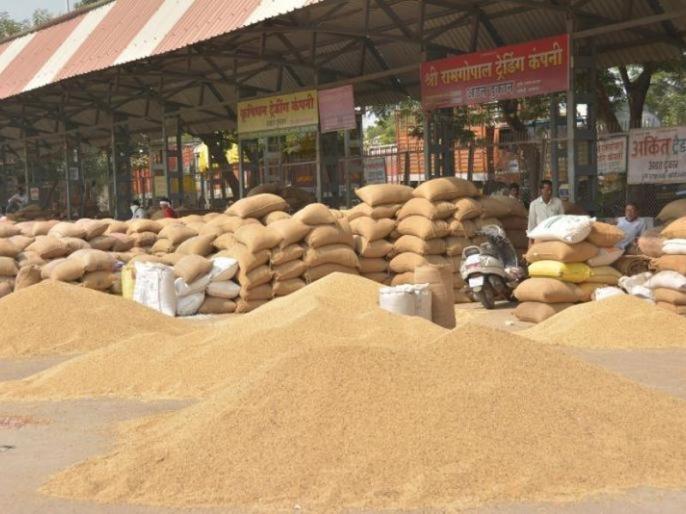
The APMC structure in Akola is fairly well-developed, with eight key APMC markets across the district. These include Akot (est. 1948), Akola (est. 1886), Barshi Takli (est. 1974), Balapur (est. 1972), Mangrulpeer (est. 1972), Murtizapur (est. 1900), Telhara (est. 1919), and Patur (est. 1972). Many of these markets are located on the same sites as older colonial or pre-colonial marketplaces. Most APMCs are equipped with facilities like godowns, auction halls, and cattle sheds, and some even have cold storage units. Markets like Akola, Mangrulpeer, and Telhara APMCs also provide canteens and rest houses for the convenience of farmers.
List of APMC markets(as of September 2024)
|
Sr. No |
Name |
Est. Year |
Chairman |
No. of Godowns |
|
1 |
Akola |
1886 |
Shirish Vasantrao Dhotre |
22 |
|
2 |
Akot |
1948 |
Prashant Manoharrao Pachade |
NA |
|
3 |
Balapur |
1972 |
Sevakram Mahadevrao Tathod |
3 |
|
4 |
Barshi Takli |
1974 |
Mahadev Sahebaro Kakad |
5 |
|
5 |
Mangrulpeer |
1972 |
Chandrakant Subhasharao Thakare |
1 |
|
6 |
Murtizapur |
1900 |
Suhas Bhagwantrao Tidke |
4 |
|
7 |
Patur |
1972 |
Arun Maroti Kachale |
NA |
|
8 |
Telhara |
1919 |
Suresh Donderam Tarale |
11 |

Farmers issues
Water Scarcity and Climate Challenges
Water scarcity is a persistent issue for farmers in Akola, particularly those relying on "koradvahu" farms, which depend entirely on seasonal rainfall. In severely affected areas, farmers resort to collecting water from small drains in dried-up riverbeds to sustain their crops.
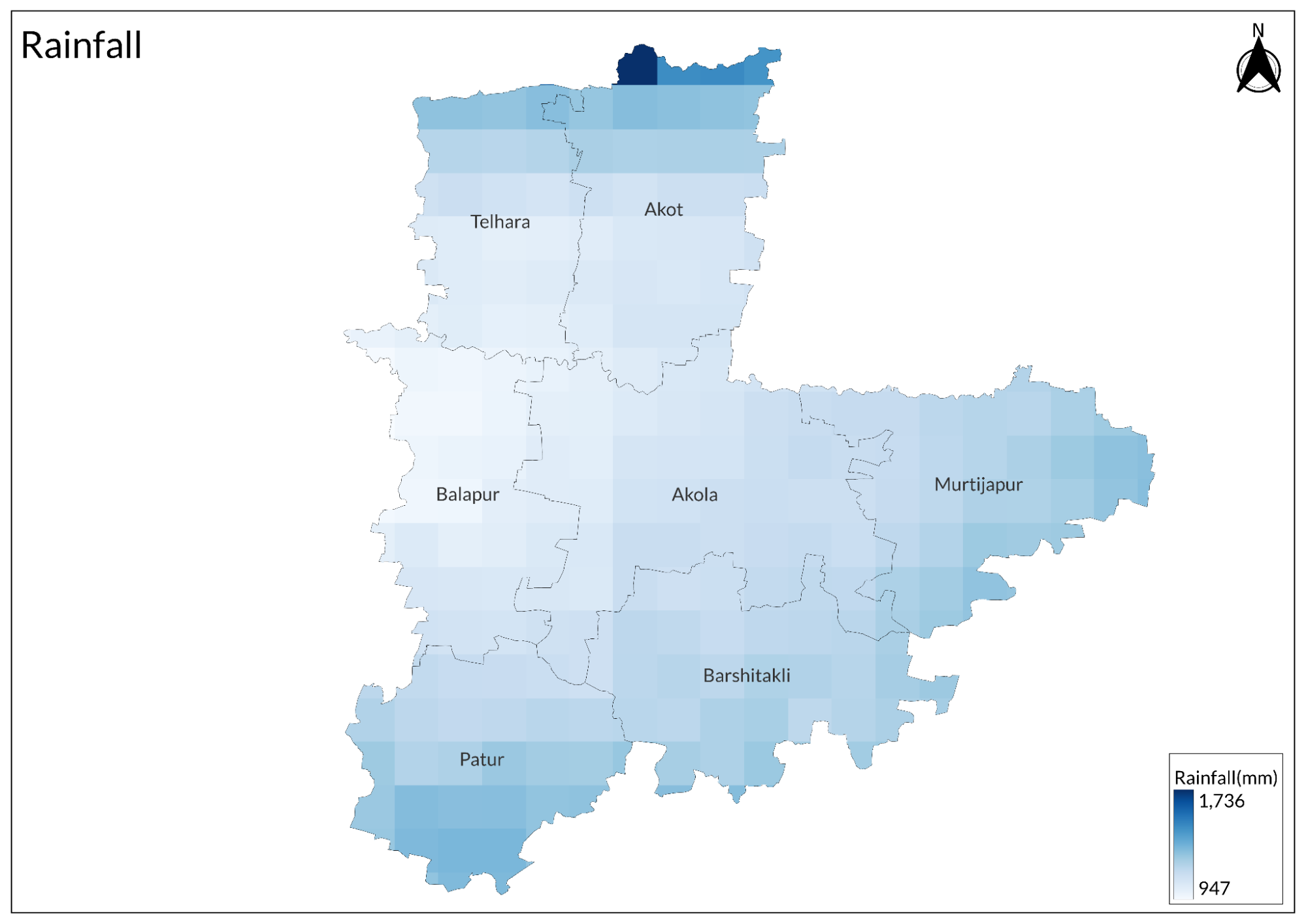
A 2022 report by ABP Majha highlighted the crisis in Kavatha village, where a dried-up dam on the Man River forced residents to dig small pits to collect percolated water. This is a stark example of the recurring water scarcity that plagues Akola and its neighboring regions. The district, situated in a drought-prone zone of Maharashtra, has historically suffered from multiple famines.
Adding to the crisis, Akola has also faced unseasonal rainfall and flooding in 2013, 2019, and 2024, severely impacting cotton and soybean crops. The Akola Zilla Parishad even declared a wet drought in response to these extreme weather patterns. These recurring droughts and unpredictable climatic events are direct consequences of global challenges such as climate change and global warming, further exacerbating the struggles of local farmers.
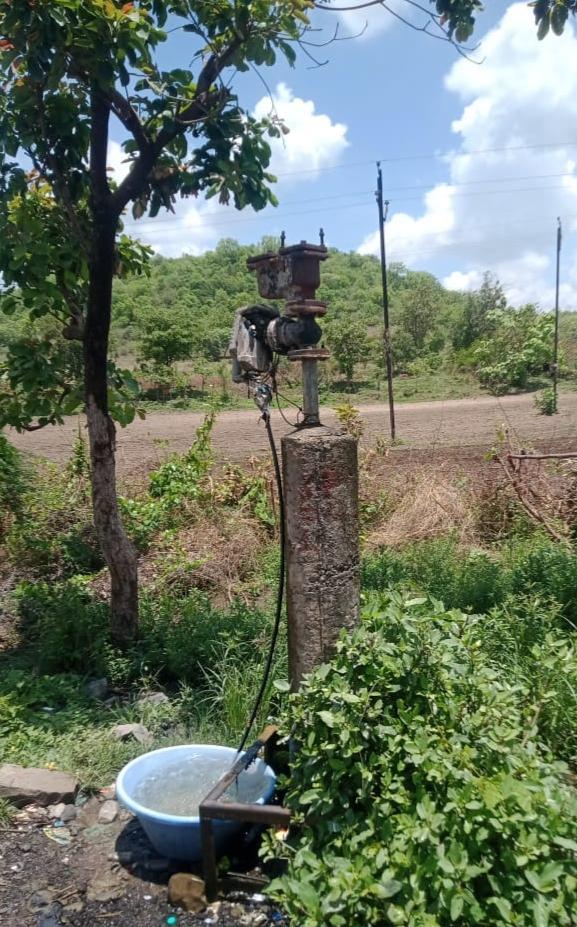
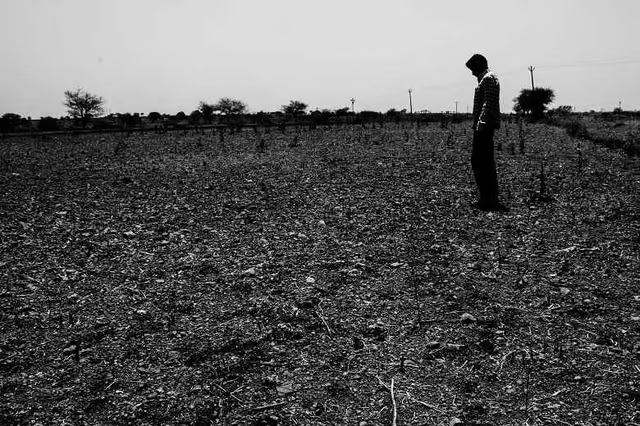
Indebtedness and the High cost of modern inputs
The cost of the input required has soared with the advent of modern technology. Poorer farmers, especially those already burdened by loans, find it difficult to carry out agriculture and also shoulder their financial responsibilities. They often borrow money from Non-Institutional Sources of credit, and many of them get trapped in a cycle of debt. Despite the work and capital that they put in, they still struggle with necessities. Many reconsider sending their children to school, which is why many rural farmers encourage their children to drop out and take up farming instead.
Due to repeated crop failures and barren land, farmers often take loans to cover the expenses for the current farming season. In addition to farming costs, they are also forced to borrow money for medical treatment, marriages of their children, and other social obligations, deepening their financial burden.
Land Fragmentation
Agriculture in Akola is marked by small land holdings, which make it difficult for farmers to adopt modern technology that is often designed for larger farms. Because of these small plots of land, many farmers still rely on traditional tools for farming. Tasks like cutting, plowing, sowing, and harrowing are often done by family members themselves, as small farms can’t afford large-scale mechanization.
Transport Issues
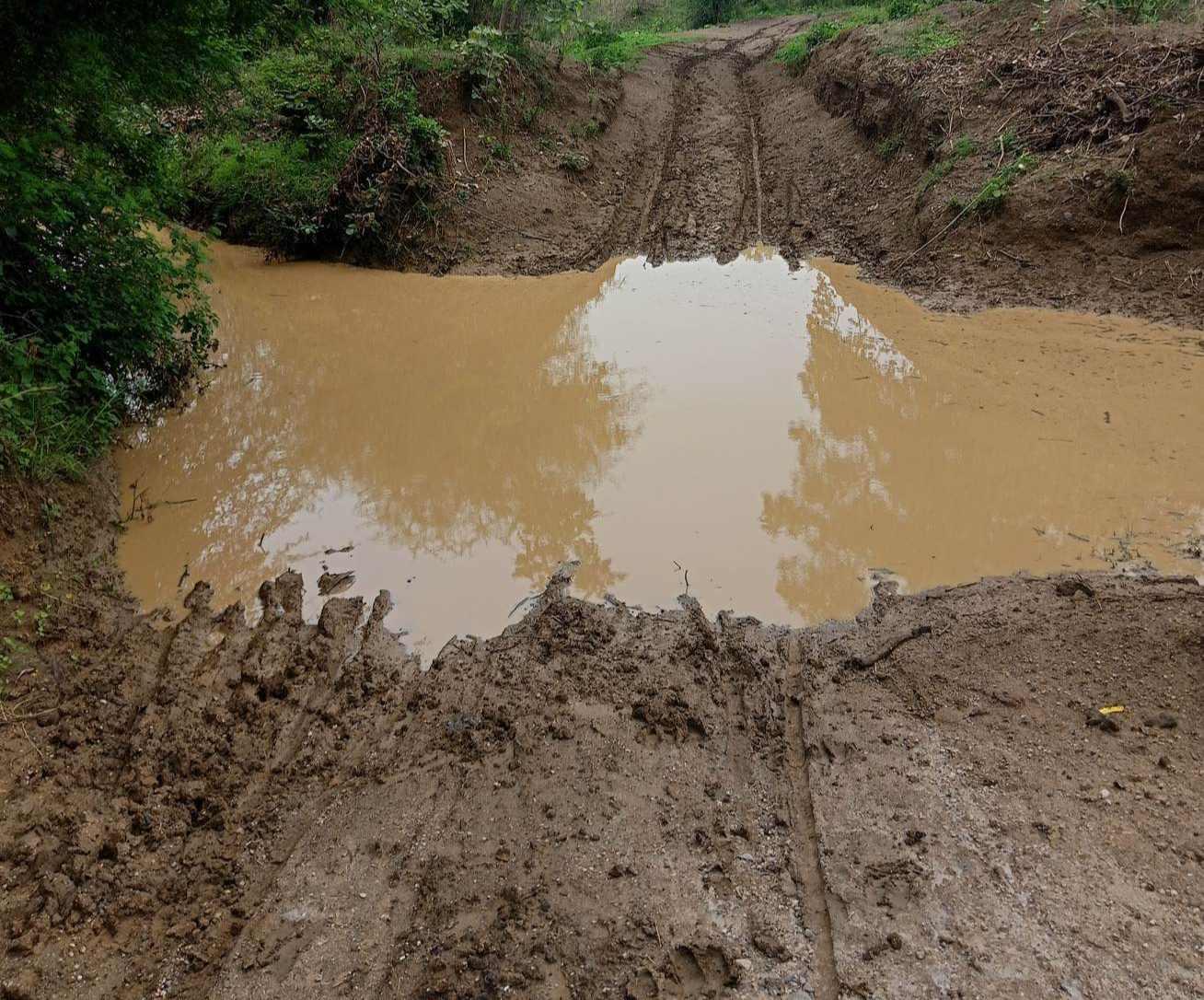
Farmers in the district also face numerous transportation challenges, especially during the rainy season. Many farms lack proper roads or pathways for easy access. In some cases, the only route to the farm passes through a river, making it impossible for farmers to reach their land and carry out sowing when the river floods.
During the rains, the roads leading to farms turn muddy, making walking difficult and leading to vehicles frequently getting stuck. Additionally, water accumulation in the fields often leads to crop damage, further complicating farming activities.
These issues have led to a rising sense of defeat amongst many farmers throughout the district. According to a Times of India report, more than 3000 farmers have committed suicide in Akola itself since 2001. The numbers portray a grim image of the crisis.
Graphs
Irrigation
Cropping Metrics
Land Use and Credit
Sources
ABP Majha. 2023. Akola : अकोल्यातील अनेक गावांत पाणीटंचाईचा प्रश्न, कवठा गावकऱ्यांचा तहान भागविण्यासाठी संघर्ष. YouTube.https://www.youtube.com/watch?app=desktop&v=…
Agrovan Team. 2023. How to make nimboli extract. Agrovan.https://agrowon.esakal.com/agroguide/how-to-…
Alzohairy, M. A. 2016. Therapeutics Role of Azadirachta indica (Neem) and Their Active Constituents in Diseases Prevention and Treatment. Evidence-based Complementary and Alternative Medicine.https://www.ncbi.nlm.nih.gov/pmc/articles/PM…
Aparna Pallavi. 2013. Unprecedented floods hit Vidarbha’s drought-prone districts. Down to Earth.https://www.downtoearth.org.in/environment/u…
C. Brown, A.E. Nelson ed. 1910. Central provinces and Berar District Gazetteers Akola District. Vol. A - Descriptive. Baptist Mission Press, Calcutta.https://archive.org/details/dli.ministry.078…
Education. Panjabrao Deshmukh Krishi Vidyapeeth. ICAR.https://education.icar.gov.in/Univ_Details_N…
ICAR.MAHARASHTRA Agriculture Contingency Plan for District: AKOLA. ICAR - CRIDA - NICRA.
Maharain.inhttps://maharain.maharashtra.gov.in/test/mah…
Maharashtra State Gazetteer Department. 1977. Akola District Gazetteer. Gazetteers Dept, Government of Maharashtra.
Mohammed Akhef, Shishir Arya. 1 Farmer ended life every day this year in Amravati. TOI.https://timesofindia.indiatimes.com/city/nag…
NABARD. 2016-17. Potential Linked Credit Plan: Akola. Maharashtra Regional Office, Pune.https://www.nabard.org/auth/writereaddata/te…
Staff writer. 2023. Maha Cabinet approves Rs 1,710 cr for dam project. Construction Week Online.https://www.constructionweekonline.in/projec…
Last updated on 6 November 2025. Help us improve the information on this page by clicking on suggest edits or writing to us.